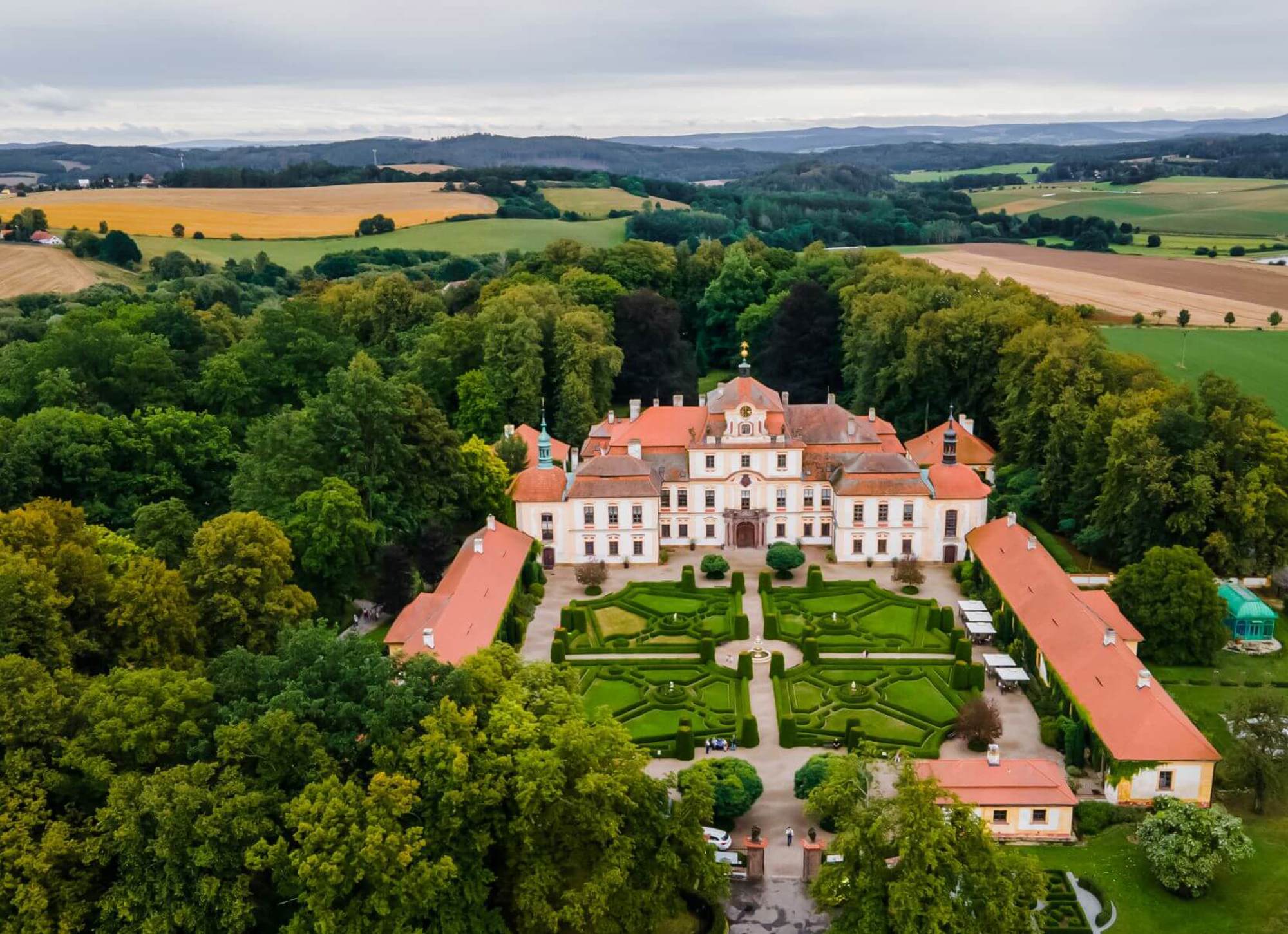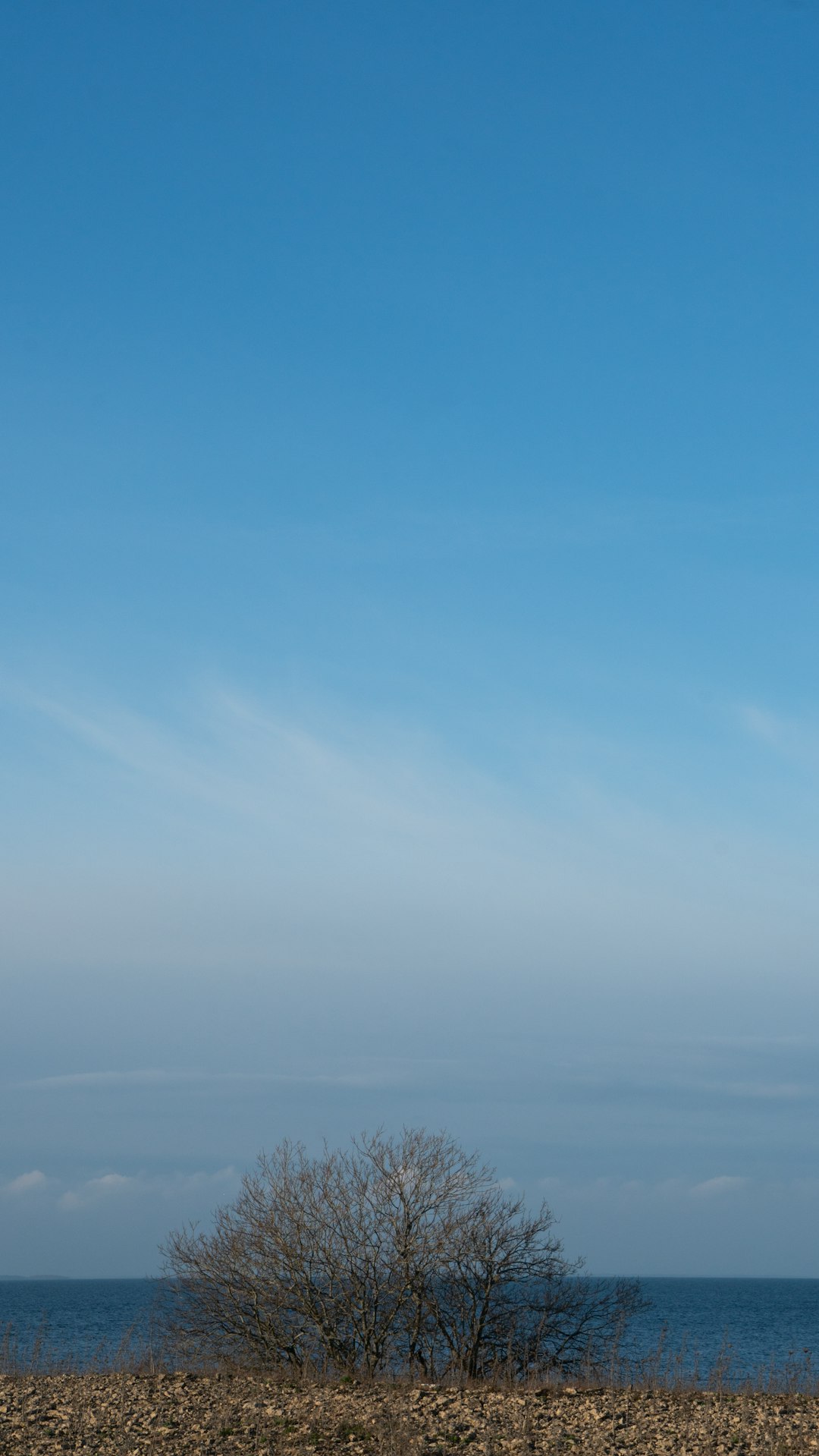14. November 2024

We present a showcase of film-friendly chateaux in the regions of the Czech Republic. It includes chateaux built in the Tudor Gothic, Renaissance, Classicist and Baroque styles. Both fully or partially reconstructed buildings are available. You'll discover interiors decorated with original furniture and rare art collections. Explore extensive parks with exotic trees, allegorical statues, and romantic pavilions. Many of these properties have been featured in films, while others await their cinematic debut.

© Jemniště Chateau archive
Valeč Chateau
This chateau, originally built in the Gothic style, was later transformed by Renaissance and Baroque renovations. In the 1970s, it became a children's home. Today, the chateau is undergoing a gradual restoration. The garden features a fountain and allegorical statues representing human characteristics, created in the workshop of Matyáš Bernard Braun. The original statues are displayed in the lapidarium, a building that once served as a stable. The 15-hectare estate also boasts a summer palace, a theatron, and a greenhouse with a cast-iron frame dating to the late 19th century.
Pátek Chateau
This chateau, designed in the style of an Italian Renaissance villa, stands as one of Bohemia's first purely Renaissance structures. A surprise awaits at the heart of the chateau - a Baroque church, converted from the main hall during 18th-century renovations. This church features wooden panelling and carved benches and has an area of 86 sqm. The chateau's remaining 14 rooms showcase the modestly furnished abbot's chambers and the monks' dining hall, known as the refectory. Film crews will appreciate the expansive, concrete farmyard, which can accommodate all their production needs.
Chrast Chateau
This chateau began as a fortress and transformed into a Renaissance residence in the late 16th century. During the mid-18th century, it underwent Baroque renovations, gaining new wings and a formal French garden. The garden still features its original roses and a collection of rare trees. A picturesque avenue lined with linden and chestnut trees leads from the garden to the Chapel of St. John of Nepomuk. From the 17th to the 20th century, the chateau served as the home of the bishops of Hradec Králové. Today, the chateau houses the Municipal Museum.
Hluboká nad Vltavou Chateau
This chateau stands on the grounds of a 13th-century castle, which was demolished to make way for its construction in the latter half of the 19th century. Designed in the Tudor Gothic style, the chateau's architecture draws inspiration from England's renowned Windsor Castle. Inside, the chateau is adorned with paintings by European masters spanning the 16th to 19th centuries, intricate wood carvings, and leather and textile wallpapers embellished with gold. Surrounding the chateau are ornamental gardens and an English park.
Jemniště Chateau
This Baroque chateau has been returned to its original owners, who reside in a portion of the building. The remaining areas are open for public tours or can be rented for special occasions like wedding receptions. Nine rooms are included in the tour, notably the Great Hall with its impressive Rococo ceiling painting and frescoes portraying Olympian gods. The chateau chapel, dedicated to St. Joseph, is adorned with Baroque and Rococo frescoes and features a magnificent altarpiece by Matyáš Bernard Braun. The 14-hectare English park, established in the early 19th century, is home to a variety of exotic trees.
Hradec nad Moravicí Chateau
Hradec nad Moravicí offers a wealth of diverse filming locations concentrated in one convenient area, complemented by excellent technical facilities. The property features two distinct chateaus: the neoclassical White Chateau, distinguished by its pseudo-Gothic White Tower, and the neo-Gothic Red Chateau with its Clock Tower, situated slightly below. Inside the chateaux, you'll find interiors furnished with nearly all the original pieces, including furniture, decorations, tableware, clothing, and historical and art collections. The expansive grounds encompass a 140-hectare English park.
Čechy pod Kosířem Chateau
Within this four-winged Neoclassical chateau, several renovated interiors showcase historical furnishings, which can be incorporated into filming upon request. The chateau is nestled within a 21-hectare English park featuring two ponds, the pseudo-Gothic Red Tower, a restored orangery dating to the mid-19th century, and the Neoclassical Mánes Pavilion. This pavilion pays homage to the painter Josef Mánes, who once resided at the chateau and whose influence shaped both the building and its surrounding parkland.
Světlá nad Sázavou Chateau
Originally a Gothic fortress, this chateau was converted into a Renaissance hunting lodge in the late 16th century. It later underwent Baroque and Neo-Renaissance renovations, resulting in its current appearance. The chateau's most spacious room is the 165-square-meter Knight's Hall, notable for its ornately stuccoed ceiling. Several rooms are furnished in the style of the First Republic. Public tours of the chateau include a visit to the original First Republic grocery store, preserved in its authentic state. The courtyard provides access to a charming winter garden with a cave and a small lake. Beyond the chateau lies an 18-hectare English park featuring a series of cascading ponds.
Koryčany Chateau
This Baroque chateau, designed in the French style, features a grand rear staircase, an expansive courtyard, and a terrace overlooking the grounds. Surrounding the chateau are an ornamental garden and an English park with a picturesque avenue lined with linden and chestnut trees. Following World War II, the chateau was nationalized and repurposed, serving variously as a textile warehouse and a boarding school. Vestiges of these eras, such as the blue-tiled washrooms, can still be found within the chateau. Currently, the chateau is under the care of a private owner dedicated to its gradual restoration.
Slavkov Chateau
Originally a Renaissance chateau, this grand residence was remodeled in the Baroque style in the late 17th century. The Ancestors' Hall stands out within the chateau with its monumental ceiling fresco portraying the Olympian gods. It connects to the Historical Hall, which is richly decorated with illusionistic paintings. The surrounding park, designed in the tradition of French Baroque gardens, was restored to its former glory in the 1970s. Today, visitors can admire its elegant layout with pools, fountains, and Baroque sculptures inspired by mythology. This chateau has graced both the small and silver screens, appearing in the Czech-Austrian-Hungarian-Slovak series "Maria Theresa" (2017-2021), broadcast on Austria's ORF network, and the French-German-Canadian-Italian series "Napoleon" (2002), broadcast by Germany's ZDF.
Kuks Hospital
Kuks was established in the 18th century as a spa town thanks to a local healing spring. The grounds, encompassing gardens and the surrounding woodlands, comprise the most extensive open-air gallery of Baroque sculpture. Within the complex, you'll find a lapidarium housing the original allegorical sculptures of virtues and vices by Matyáš Bernard Braun and the second-oldest Baroque pharmacy in the Czech Republic. Since the hospital's founding, a medicinal herb garden has flourished behind it.
Horšovský Týn Chateau
Founded in the first half of the 13th century as a bishop's castle, it was transformed into a Renaissance residence following a devastating fire in the mid-16th century. Today, visitors can explore the chateau on guided tours, including spaces that showcase Renaissance-era living, the chamberlain's rooms, a riding hall, the chateau kitchen dating back to the 1920s, and a period laundry room. The chateau grounds encompass a sprawling 40-hectare park with two ponds, an observation tower, and an avenue lined with ancient linden trees.
























































































































































































































